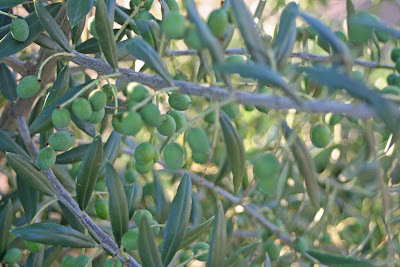Well, I'm finally back online and blogging again after a bit of a hiatus due to a gardening-induced eye injury. Yes, gardening is not as innocuous an activity as it may seem, especially to the uninitiated. Some of the hidden dangers include: accidentally falling into a thorny rosebush whilst deadheading (an understandable freak-out reaction to a grasshopper); getting stung to kingdom come on both legs by a horde of angry red fire ants while cluelessly standing right next to their mound (I like their Spanish name "Hormigas Rojas del Fuego" - Si!! and the pain is excruciating - you'll rail against God after getting bitten by one or many of these *&%$##!!); falling on your bum and spraining your ankle while trying to navigate a dry gravelly slope in your back yard wearing Tevas (tennies & hiking boots are a MUCH better choice, along with avoiding those fruity summer cocktails, which give you a false sense of bravado when gardening); standing less than three feet away from a 4-ft. long Red Diamondback Rattlesnake in your herb garden while watering your plants AND the snake with a garden hose (with the snake looking genuinely perplexed by the stream of water hitting its forehead); and getting third degree burns from the pure imbecility of extreme gardening in triple digit heat without the benefit of sunscreen.
Sadly, I've been there and done all these things, and now I can add poking my eye on a bone dry, hard-as-a-tack seed head of a Clarkia while frenetically weeding. Who woulda thought? A Clarkia?? Anyhoo, had really blurry vision for about 24 hours and was on antibiotics for 5 days, just in case. Avoided the computer except for work, but now all appears to be A-ok.
On to my Olive SOS. We've got eight olive trees on the property and it looks like we're finally going to get our first real crop this year. We have 3 Missions, 3 Manzanillos, 1 Arbequina, and 1 Leccino. The most prolific of the bunch is the Spanish olive 'Arbequina,' followed by Mission and Manzanillo.
7/17/10 Arbequina Olive
7/17/10 Arbequina Olive
7/17/10 Mission Olive
7/17/10 Manzanillo Olive
So the million dollar question is, when do I harvest and what the heck do I do with them after? I doubt I have enough olives to make olive oil (although I do fantasize about hitching my adorable but otherwise useless pooch, with fake donkey ears and all, to a stone mill to produce our own proprietary brand of EVOO). What about curing or brining? I've done some research online, but the process seems daunting. If anyone has some simple, user-friendly suggestions for what to do with a home-grown olive crop, I'd love to hear from you!
7/17/10 Mission & Manzanillo Olives
7/17/10 Left to right: Manzanillo, Leccino & Arbequina Olives
































